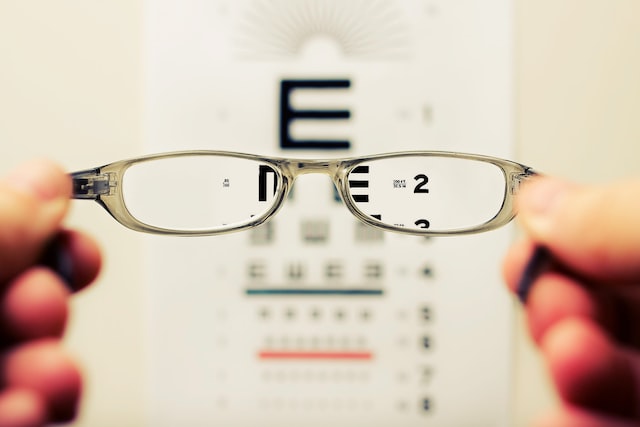Eyesight prescriptions are tricky. They may seem straightforward enough, but formulating them is a precise art. They should be followed exactly and taken very seriously to avoid causing harm to your eye health.
If you aren’t convinced, read on to find out what your prescription really means and why it’s so important not to stray from these recommendations – even if you have been wearing contact lenses for years and enjoy the freedom of being able to buy them online.
What does my prescription mean?
As long as you have your prescription available and you update it every year, your contact lenses should be comfortable, safe to use and work properly to help you see perfectly. That said, it’s always useful to have an understanding of the sight challenges that are specific to you, and how your prescription works to correct them.
On your prescription you may see a lot of abbreviations and numbers that you don’t understand. However, these are the codes that help opticians identify the type of contact lenses that are suitable for you. Once you understand these, you should be able to visit any trustworthy dispensary instore or online to get the eye care products that you need.
What does a contact lens prescription include?
A contact lens prescription contains all of your unique contact lens specifications which inform what type of lenses you need. You can tell if you have a contact lens prescription or a glasses prescription based on the information provided.
A legitimate contact lens prescription will always include the following:
- Patient’s name
- Patient’s date of birth
- Date of prescription and recall date (when the next appointment should be)
- Information on the left eye, right eye or both
- Sphere/Power [SPH/PWR]
- Base curve [BC]
- Diameter [DA]
- Brand and product name of recommended contact lens
- Qualified optician’s name and signature
Based on need, your contact lens prescription might also include the following:
- Cylindrical power [CYL] (for astigmatism prescriptions)
- Axis [AX] (for astigmatism prescriptions)
- Dominant [D] or non-dominant [N] (for multifocal prescriptions)
- Intermediate add [ADD] (for presbyopia prescriptions)
- Near add [ADD] (for presbyopia prescriptions)
Note: You are only eligible to wear the brand and product cited in your prescription, or exact equivalents. Consult your optician if you wish to try another product.
How can I get a contact lens prescription?
A registered qualified optician will examine your eyes and conduct some tests to determine whether you are suitable for contact lenses or not. Using the results of the eye examination, they will determine what strength and type of contact lens you need, and which products are best for your eyes.
To proceed with the fitting, your optician will recommend a suitable product and demonstrate how to insert them into your eyes. Before you can leave with your prescription, you will be asked to demonstrate your ability to insert and remove your new contact lenses at least three times under supervision. This is an important step in the process so that your optician is satisfied that you can safely and responsibly handle your contact lenses on your own. Without completing this step, your optician will not be able to progress with your prescription.
Once you are initially fitted with contact lenses and have been informed about safety risks, terms and conditions, and care practices you will be asked to come back for an aftercare appointment. During the aftercare appointment, you will be asked to arrive wearing your contact lenses and to have actively practiced wearing your contact lenses in increments each day up to a week prior. Based on what you discuss in this appointment, you will determine with your optician whether your lenses have been comfortable and are not causing any problems.
If your experience with the lenses has been problem-free, your optician can confirm the suitability of your prescription. At this point, you will be given the option to purchase the lenses that have been selected for you and you should be given a copy of your contact lens prescription.
How can I check my contact lenses are the right prescription?
The power of the contact lens will always be displayed on the packaging. You can find it either on the blister pack containing your lenses or at the end/side of the box they came in. The information found there should correspond to the piece of paper containing your prescription, which your optician will have given you after your final contact lens fitting appointment.
If you did not receive your contact lens prescription at your last contact lens fitting appointment, this means that either you are not suitable to wear contact lenses and therefore you are not eligible for a contact lens prescription, or you may need to request a copy due to error.
For anyone who is eligible for a contact lens prescription, the optician does not have the right to withhold your prescription. Make sure that you get a copy of your prescription even if you do not choose to purchase contact lenses on the day. You may incur a charge for the prescription itself, but this is usually covered by the cost of the appointment and should be minimal.
Can I use my glasses prescription to get my contact lenses?
Contact lens prescriptions and glasses prescriptions are not interchangeable. As such, please don’t try to use your glasses prescription to buy contact lenses. It simply doesn’t work like that!
First of all, this type of prescription will not be accepted by a contact lens vendor. Second of all, the power will be incorrect as this measurement changes with distance to the eye and some vital information, including base curve and diameter will be missing too.
If you want to buy contact lenses, you will simply have to arrange an appointment with a qualified optician and go through all of the necessary steps to get a contact lens prescription safely and legitimately.
About Tina Patel
Tina Patel is a qualified Contact Lens Optician at Feel Good Contacts. She achieved a BSc (Hons) in Optical Management in 2002 from Anglia Ruskin University, Cambridge and qualified as a Dispensing Optician. In 2007, Tina went on to qualify as a Contact Lens Optician. With over 25 years of experience in the optical industry, she has worked for a leading high street optician and also spent 6 years teaching at City, University of London.




